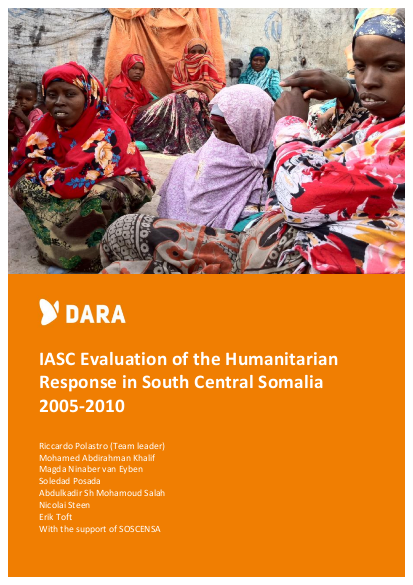
This is the report of the Inter-Agency Standing Committee Evaluation of the Humanitarian Response to South Central Somalia from 2005 to 2010. Somalia has experienced one of the world’s most protracted emergencies. More than two decades of conflict, combined with cyclical, slow, and fast-onset disasters, have caused displacements of millions of Somalis. In the absence of central government, few people have access to basic social services; hunger and famine are recurrent. Despite critical access and security constraints, the overall response was successful in some key areas such as food distribution, health, nutrition, water, and sanitation. In the period under review, there was no large-scale disease outbreak, even though millions of people fled from their homes in a very short period. There were a number of innovative features in the response, especially concerning remote management. Consolidated appeals and other key documents referred to the need to address root causes of recurrent vulnerabilities, but very little evidence exists that this has been done. The response in South Central Somalia has often been reactive, utilising supply-driven approaches that have most often focused on short-term humanitarian objectives. Comprehensive recovery responses have generally been insufficiently prioritised, even when security was stable and access possible. Despite isolated attempts, overall measures to mitigate the consequences of recurrent droughts have not been addressed sufficiently.